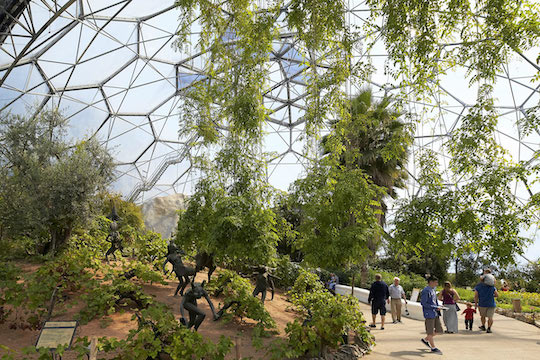80 hectares make up this titanic project, 170 million euros and more than 5,000 plant species give life to Eden. It has received about 20 million visitors thus far. The visitors can venture into different environments, such as the Mediterranean biome where you can between orange and lemon trees, olive trees and old vines which are formed in peculiar shapes.
The Eden Project has made history not only as one of the biggest regeneration projects on the planet, but as a mandatory reference point for environmental education and as the main tourist attraction in the south of England.
In 1996, Tim Smit, the creator of this unique natural paradise, used his imagination and put the first sketches of his dream on a napkin in a pub. The sketches were of an epic place where he could exhibit the most important plants in the world. In order to do this, he needed an extraordinarily large space, which is why his idyllic design is set in a quarry whose economic activity has just ended. It is located in Cornwall, in the south of England, 240 km from London. Just two years later, the project begin and in March 2001 the «Eden Project» was officially inaugurated.
The olive trees are of the picual variety, they have 3 trunks and they have not been transplanted from any place where they previously lived. They were created by a few olive stalks that came from Andalusia. Then, they were planted in Eden’s garden.
Well, as the legend has it, if it is said to be Eden, it will have with olive trees and bushes. If there are no olive trees, it is another garden, but not the garden of Eden.


